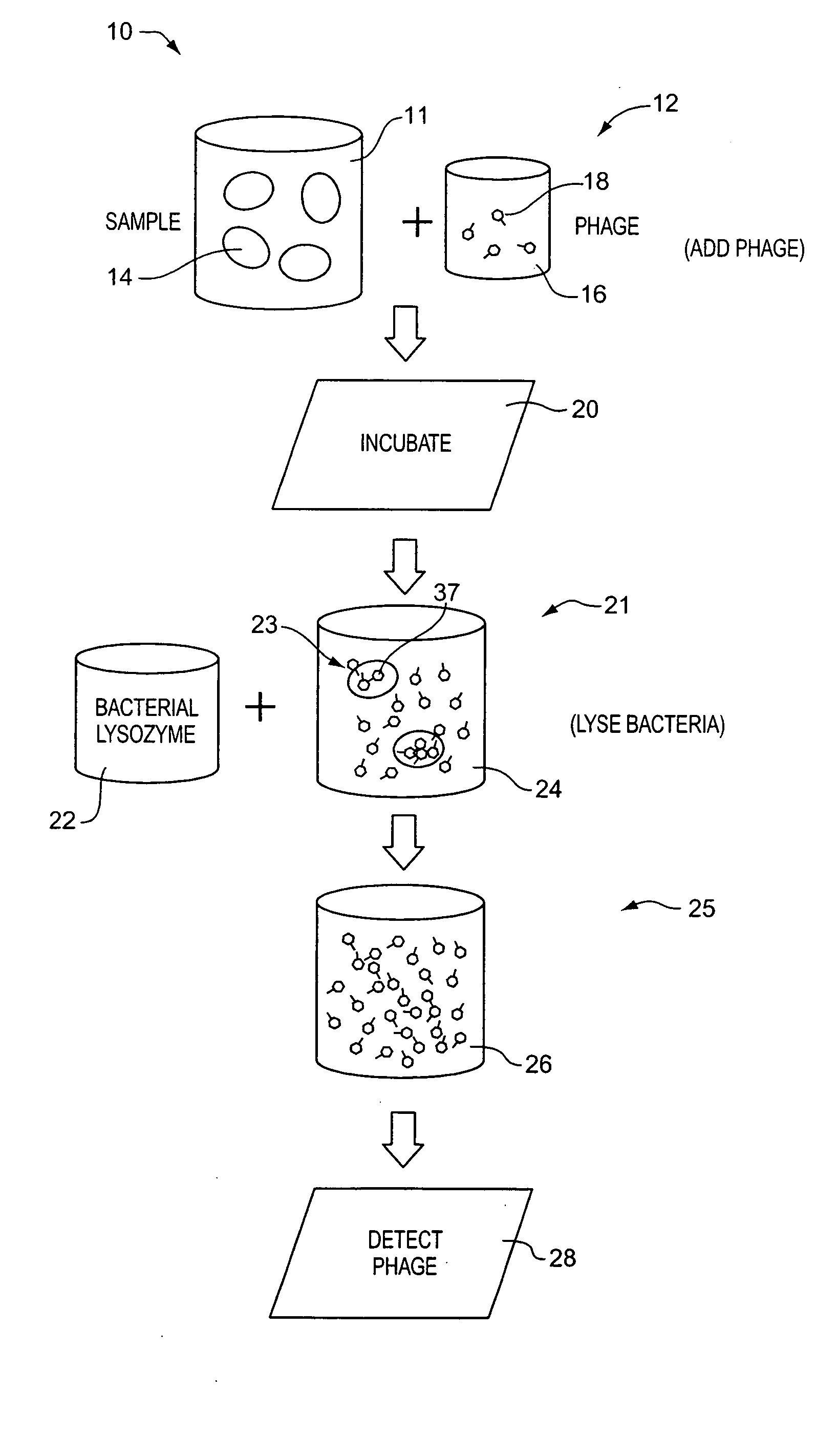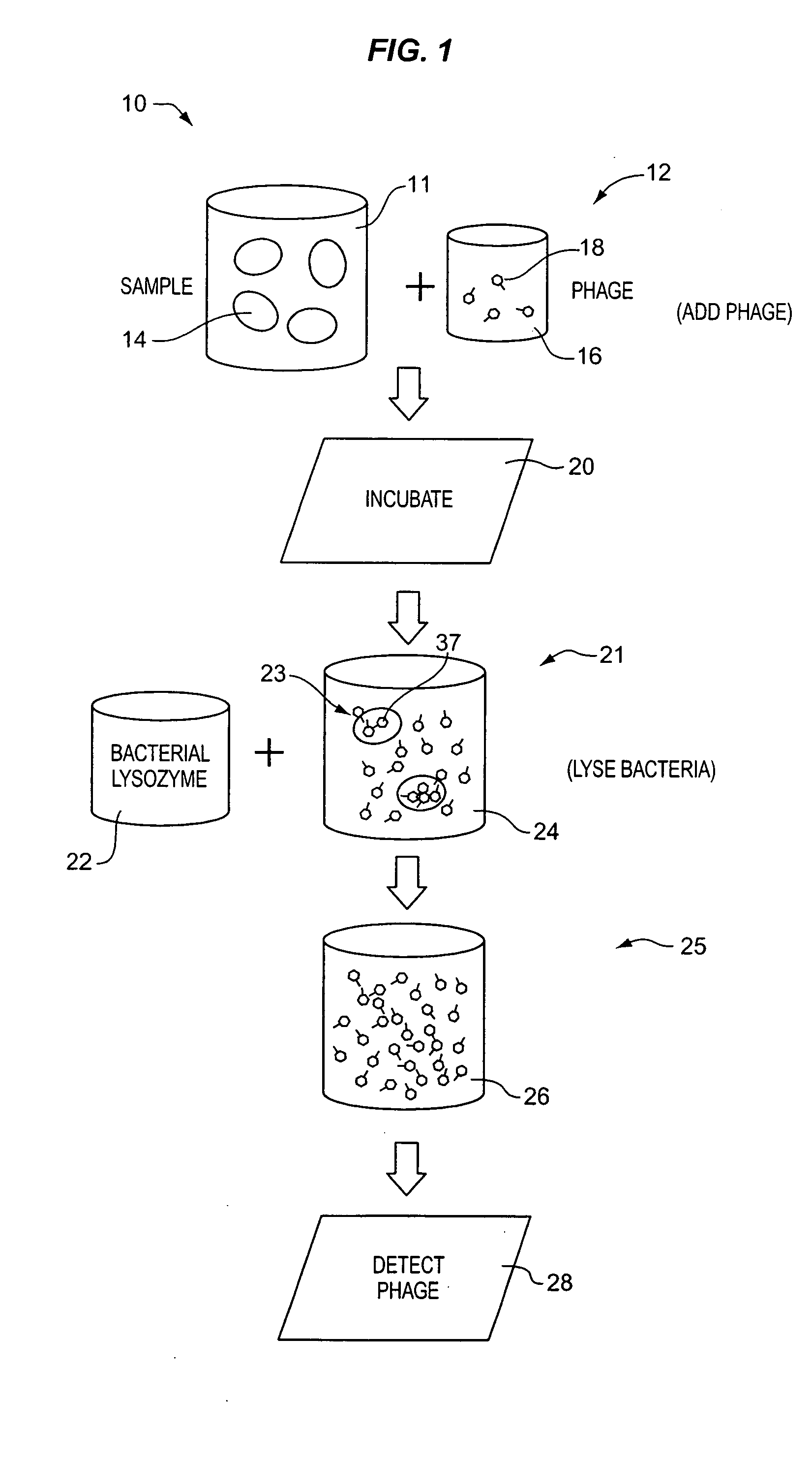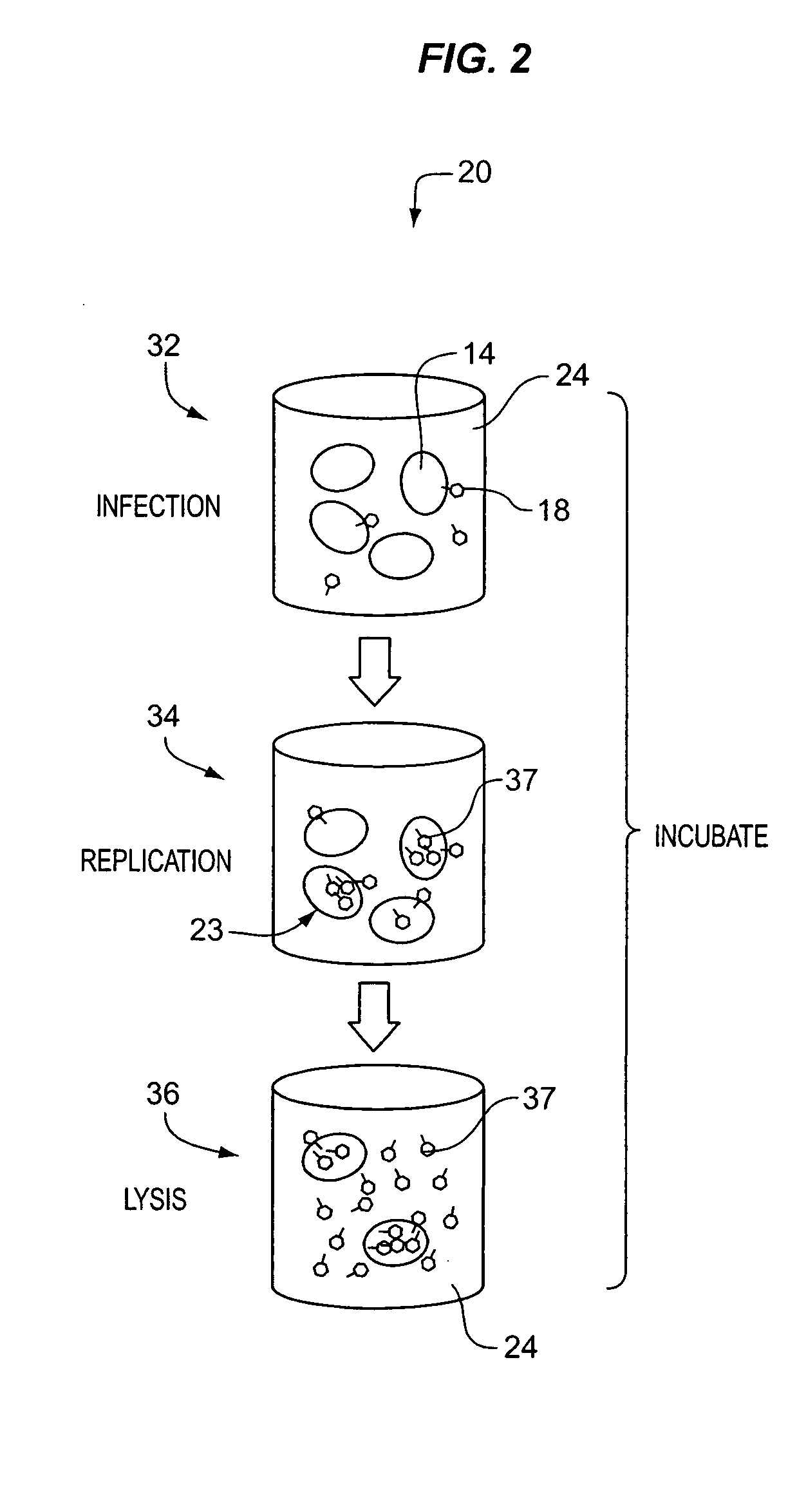Apparatus and method for detecting microscopic living organisms using bacteriophage
a technology of living organisms and apparatus, applied in the field of detection of microscopic living organisms, can solve the problems of taking twenty-four hours or longer, slow methods, and hindering substrate-based assays, and achieve the effect of simple operation and rapid results
- Summary
- Abstract
- Description
- Claims
- Application Information
AI Technical Summary
Benefits of technology
Problems solved by technology
Method used
Image
Examples
first embodiment
[0092] Process 99 of the embodiment illustrated in FIG. 6, DETECT PHAGE SUBCOMPONENT, comprises detecting a biomarker, i.e., dissociated bacteriophage substance 97, associated with the dissociated phage subcomponents. With respect to the foregoing discussion, it should be understood that a bacteriophage substance can be both a dissociated bacteriophage substance and at the same time be associated with the bacteriophage. That is, the phrase “a dissociated bacteriophage substance” means a substance that is no longer a part of a whole bacteriophage, while the term “associated with the bacteriophage” means that substance was at one time a part of a bacteriophage or is produced in the process of bacteriophage replication. Owing to the usage of the phage dissociation agent in process 94, there are an abundance of individual capsid proteins 97 that can be detected in process 99. As with the first embodiment, these can be detected using established antigen-antibody based immunoassay techniq...
embodiment 90
[0099] In process 121, DISSOClATE PHAGE, a phage dissociation agent 122 is added to the test sample 124 as taught in process 94 of embodiment 90 and illustrated in FIG. 6. In a preferred embodiment, the tagged parent phage is physically removed from the test sample in process 114 rather than simply segregated so that it will not be exposed to the phage dissociation agent in process 121. Thus, the test sample 124 contains only progeny phage, and the dissociated test sample 126 will contain biological marker material, such as capsid proteins 128, only from progeny phage. In this manner, the amplification associated with dissociating the phage capsid proteins 128 will combine with the phage amplification of process 107, resulting in a much higher total amplification. For example, if the phage amplification process gives an amplification of 1000 per bacterium and the phage has 100 copies of a particular capsid protein, then the combined amplification will be 103×102 or 105 per target ba...
embodiment 120
[0100] DETECT PHAGE SUBCOMPONENT process 130 of the embodiment 120 illustrated in FIG. 6 is preferably the same as any of the processes 28, 99, and 116 of the earlier embodiments.
[0101]FIG. 9 illustrates a method 140 by which any of the embodiments of the invention can be used to detect a target bacterium, and if present, determine if it is resistant to one or more antibiotics. A sample 142 that may contain the target bacterium is divided into two, a first Sample A, indicated by 144, and a second Sample B, indicted by 145. A first antibiotic 146 is added to Sample B whereupon the target bacteria in Sample B are killed if they are not resistant to the first antibiotic. Samples A and B are then analyzed at 148 and 149 to detect the presence of viable target bacteria in each, giving Result A and Result B. Any of the methods taught in this invention can be used for these analyses. If Result A is positive, it indicates that the target bacterium is present in the original sample. If Resul...
PUM
 Login to View More
Login to View More Abstract
Description
Claims
Application Information
 Login to View More
Login to View More - R&D
- Intellectual Property
- Life Sciences
- Materials
- Tech Scout
- Unparalleled Data Quality
- Higher Quality Content
- 60% Fewer Hallucinations
Browse by: Latest US Patents, China's latest patents, Technical Efficacy Thesaurus, Application Domain, Technology Topic, Popular Technical Reports.
© 2025 PatSnap. All rights reserved.Legal|Privacy policy|Modern Slavery Act Transparency Statement|Sitemap|About US| Contact US: help@patsnap.com



